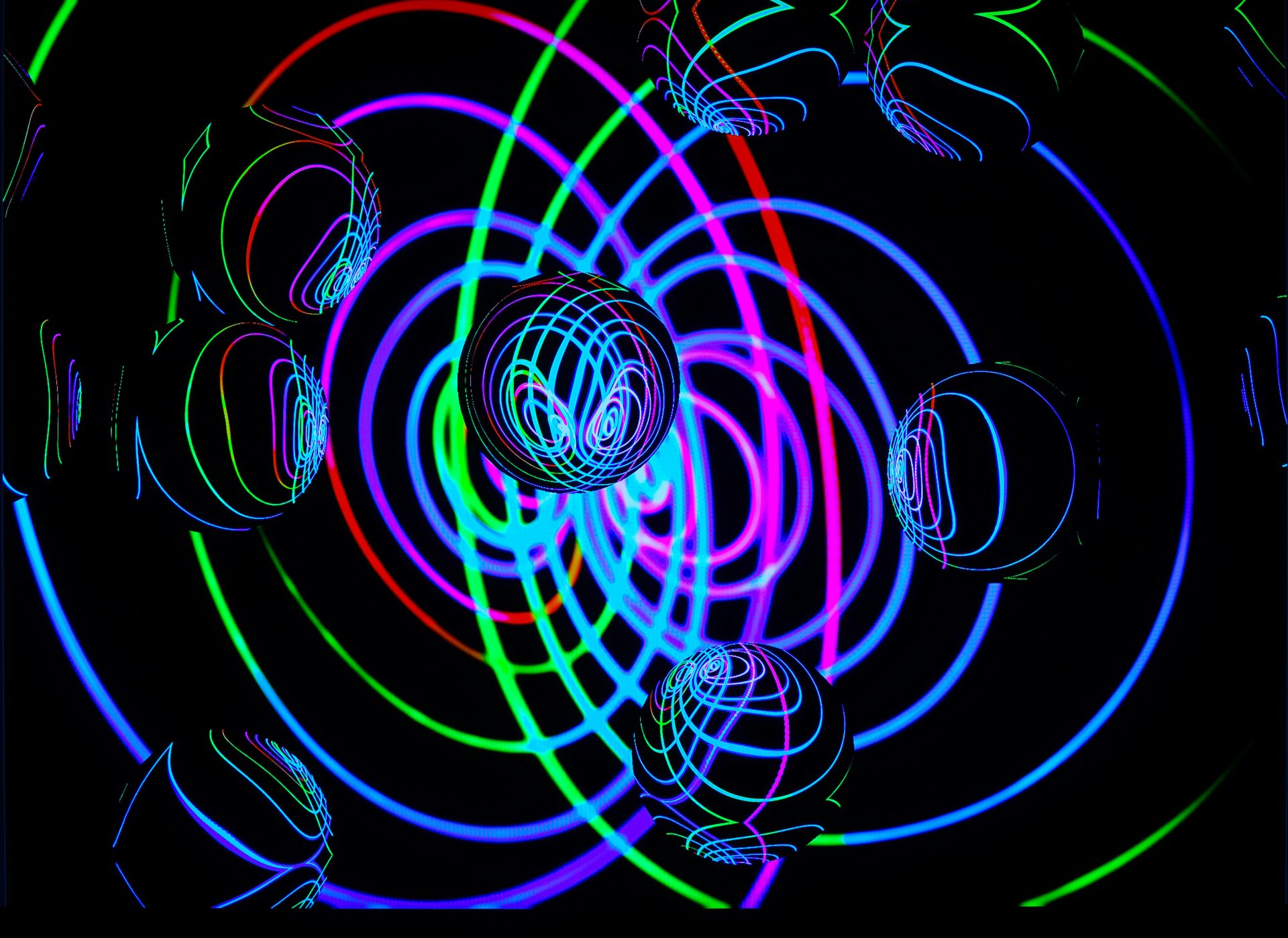Enlil and Ninlil’s Sacred Marriage: Divine Union

Hey there, amazing readers! 🖐️ Just a quick note: yes, we know there are a lot of ads here. Trust us, we get it—it’s not the prettiest look, but they help us keep this blog alive and kicking. Those pesky little ads cover the costs of all the behind-the-scenes magic, from hosting and tech stuff to creating content we hope you’ll love.
We’re committed to delivering quality posts, and your support (even just sticking around despite the ads) means everything to us. So, bear with us, and thanks for helping us keep the good vibes rolling. Now, on to the fun stuff! 😉
TRANSLATE BUTTON AT THE END OF THE ARTICLE
Overview
The sacred marriage between Enlil and Ninlil is a significant aspect of ancient Mesopotamian mythology and cultural beliefs.
This divine union between the god of wind, storms, and agriculture, Enlil, and the goddess of grain, fertility, and marriage, Ninlil, holds great importance in understanding the Sumerian culture and its religious practices.
This article delves deep into the various facets of Enlil and Ninlil’s sacred marriage, examining its origins, symbolism, rituals, and the profound impact it had on the cosmos, human relationships, fertility, and social structures.
By exploring this divine union, we can gain insights into the ancient beliefs and traditions that continue to influence our modern world.
Enlil and Ninlil: The Sacred Marriage of Gods
Enlil and Ninlil’s sacred marriage was a celestial union between two prominent deities in the ancient Mesopotamian pantheon.
Enlil, also known as the "Lord Wind," was revered as the god of wind, storms, and agriculture.
Ninlil, on the other hand, was the goddess of grain, fertility, and marriage.
This divine union symbolized the harmonic connection between heaven and earth, and the balance between masculine and feminine energies.
It was believed to ensure the well-being and prosperity of the entire cosmos.
Mythology and Beliefs in Ancient Mesopotamia
Ancient Mesopotamia, located in present-day Iraq, was home to one of the world’s earliest civilizations.
The Sumerians, Akkadians, and Babylonians, who inhabited this region, had rich mythologies and religious beliefs.
They worshipped a pantheon of gods and goddesses who controlled various aspects of life, including natural forces, agriculture, fertility, and the cosmos.
These deities were thought to have human-like attributes and often engaged in divine unions, such as the sacred marriage of Enlil and Ninlil, which were believed to be essential for maintaining cosmic harmony and the functioning of the world.
Understanding the Divine Union in Sumerian Culture
In Sumerian culture, the divine union was viewed as a profound and sacred event that mirrored the union of heaven and earth.
It represented the marriage of two complementary forces, symbolizing the balance between male and female energies.
This union was considered essential for the sustenance of life, both in the physical and spiritual realms.
The rituals associated with the sacred marriage aimed to ensure fertility, agricultural abundance, and the overall well-being of society.
Enlil: God of Wind, Storms, and Agriculture
Enlil, the god of wind, storms, and agriculture, held a prominent position in the Sumerian pantheon.
He was believed to control the forces of nature and was primarily associated with the wind and storms, which brought both destruction and renewal.
As the god of agriculture, Enlil played a vital role in the growth of crops and the fertility of the land.
He was often depicted as a bearded man carrying a mace or a shepherd’s crook, symbolizing his power and authority.
Ninlil: Goddess of Grain, Fertility, and Marriage
Ninlil, the goddess of grain, fertility, and marriage, was highly revered in ancient Mesopotamia.
She was known as the mother of the gods and was associated with the fertile earth and the abundance of crops.
As the goddess of marriage, she was believed to bless unions and ensure the continuity of the human population.
Ninlil was often depicted as a woman wearing a horned crown, representing her divine status, and holding a staff, symbolizing her authority over fertility and childbirth.
The Origin and Significance of the Sacred Marriage Ritual
The sacred marriage ritual between Enlil and Ninlil can be traced back to the early Sumerian period.
It is believed to have originated as a way to ensure the fertility of the land and the prosperity of the people.
The ritual involved the selection of a young woman to represent Ninlil and a high-ranking priest or king to embody Enlil.
The chosen individuals would engage in a symbolic union, acting as intermediaries between the divine and human realms.
This ritual was performed annually during the New Year festival, known as Akitu, and was considered vital for maintaining cosmic harmony and the well-being of society.
Symbolism and Rituals Associated with Enlil and Ninlil
The sacred marriage of Enlil and Ninlil was laden with symbolism representing various aspects of life and the cosmos.
The union of Enlil, the god of wind and storms, with Ninlil, the goddess of grain and fertility, symbolized the harmonious interaction between the forces of nature.
It highlighted the importance of balance and complementary energies in ensuring the overall well-being of society.
The rituals associated with the sacred marriage involved elaborate processions, offerings, prayers, and feasts that aimed to invoke the blessings of the deities and secure their favor for fertility, abundance, and a prosperous future.
Exploring the Divine Union’s Role in Sustaining the Cosmos
According to ancient Mesopotamian beliefs, the divine union between Enlil and Ninlil played a crucial role in sustaining the cosmos.
It was believed that through their union, the gods themselves were able to procreate and bring forth new life.
This act of creation mirrored the union of heaven and earth, ensuring the continuity and renewal of the world.
The rituals associated with the sacred marriage were performed to maintain this cosmic balance and to ensure the proper functioning of the natural and supernatural realms.
Implications of the Sacred Marriage on Human Relationships
The sacred marriage of Enlil and Ninlil held significant implications for human relationships, particularly in the context of marriage and fertility.
The union between these two deities was seen as a model for earthly unions, emphasizing the importance of love, harmony, and the mutual support between partners.
It was believed that a successful marriage mirrored the divine union and had the potential to bring forth new life and sustain the community.
The rituals associated with the sacred marriage served as a reminder of the sacredness of marriage and the responsibilities of both partners in fostering a harmonious and fruitful relationship.
The Role of Enlil and Ninlil’s Union in Ensuring Fertility
Fertility was a central concern in ancient Mesopotamian society, as it directly impacted the prosperity and survival of the community.
The sacred marriage of Enlil and Ninlil was believed to have a direct influence on fertility, both in terms of human reproduction and agricultural abundance.
By ensuring the union of the divine couple, it was thought that the gods would bless the land with fertility and the people with healthy offspring.
The rituals conducted during the sacred marriage aimed to invoke the blessings of Enlil and Ninlil for the fertility of the land, the success of crops, and the prosperity of society.
How the Divine Union Influenced Social and Political Structures
The sacred marriage of Enlil and Ninlil had a profound impact on the social and political structures of ancient Mesopotamia.
The union between these two deities symbolized the harmonious interaction between different elements of society.
It highlighted the importance of cooperation, mutual support, and balance in maintaining a well-functioning community.
The rituals associated with the sacred marriage were often performed by high-ranking individuals, such as priests or kings, who held significant political power.
This further reinforced the connection between religious and political authority, solidifying the social hierarchy and the divine legitimacy of rulers.
The Legacy of Enlil and Ninlil’s Sacred Marriage in Modern Times
Although the ancient Mesopotamian civilizations have long faded into history, the legacy of Enlil and Ninlil’s sacred marriage continues to resonate in various ways.
The concept of a divine union between two complementary forces can be found in various religious and spiritual traditions around the world.
The symbolism of balance, harmony, and fertility represented by Enlil and Ninlil’s union is still relevant in understanding the complexities of human relationships and societal well-being.
Additionally, the rituals associated with the sacred marriage have influenced modern wedding ceremonies, highlighting the enduring significance of this ancient tradition in shaping our cultural practices.
Conclusion
The sacred marriage of Enlil and Ninlil in ancient Mesopotamia was a deeply rooted belief and tradition that had wide-ranging implications on the culture, religion, and social structures of the time.
This union between the god of wind, storms, and agriculture, Enlil, and the goddess of grain, fertility, and marriage, Ninlil, symbolized the harmonious balance between masculine and feminine energies, and their cosmic union was seen as crucial for ensuring the well-being and prosperity of the entire cosmos.
The rituals, symbolism, and concepts associated with Enlil and Ninlil’s sacred marriage continue to leave a lasting impact, influencing our understanding of human relationships, fertility, and the intricate connections between the divine and mortal realms.

The Enlightenment Journey is a remarkable collection of writings authored by a distinguished group of experts in the fields of spirituality, new age, and esoteric knowledge.
This anthology features a diverse assembly of well-experienced authors who bring their profound insights and credible perspectives to the forefront.
Each contributor possesses a wealth of knowledge and wisdom, making them authorities in their respective domains.
Together, they offer readers a transformative journey into the realms of spiritual growth, self-discovery, and esoteric enlightenment.
The Enlightenment Journey is a testament to the collective expertise of these luminaries, providing readers with a rich tapestry of ideas and information to illuminate their spiritual path.
Our Diverse Expertise 🌟
While our primary focus is on spirituality and esotericism, we are equally passionate about exploring a wide range of other topics and niches 🌍📚. Our experienced team is dedicated to delivering high-quality, informative content across various subjects ✨.
To ensure we provide the most accurate and valuable insights, we collaborate with trusted experts in their respective domains 🧑🏫👩🏫. This allows us to offer well-rounded perspectives and knowledge to our readers.
Our blog originally focused on spirituality and metaphysics, but we’ve since expanded to cover a wide range of niches. Don’t worry—we continue to publish a lot of articles on spirituality! Frequently visit our blog to explore our diverse content and stay tuned for more insightful reads.







